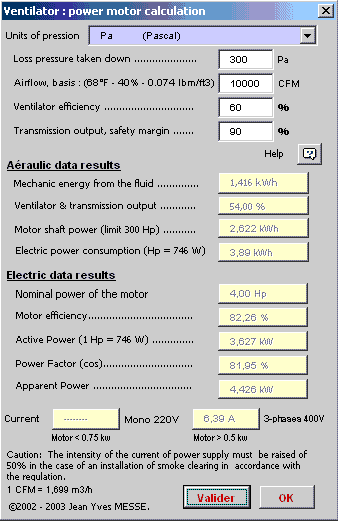| Active power, apparent power, reactive power, power factor, motor transmission, motor output, Mechanical energy, helicoidal fan, ventilator output, pressure loss coefficient. |
| _You are in the heading |
|
The absorptive energy by the ventilator breaks up into: Mechanical energy provided to the fluid It is the communicated power to the air during of its passage through the ventilator. This mechanical power is given by the following formula:
with:
Degraded energy expressed by the output of the ventilator It is the power measured on the coupling shaft of the ventilator. Mechanical energy necessary to a ventilator is always higher than the energy transmitted to the fluid consequently to various frictions of the transmission systems.
With:
The generally allowed outputs are:
The only types of ventilators, which are appropriate for the installations for constant pressure or variable air volume, are the centrifugal blades fans inclined backwards and the propeller fans (curved steeply sloping characteristics) The Flow Volume cannot be reduced generally to the 1/3, seldom below 50%. In the contrary case, it is necessary to use engines with progressive regulation, that is to say mobile blading. Transmission output The transmission of the energy of the engine to the ventilator is done with a certain loss, mainly in the case of a belt drive, because of the slip of the latter on the pulleys.
Last update:
|
Copyright © 2003-2014 - ThermExcel - All Rights Reserved
